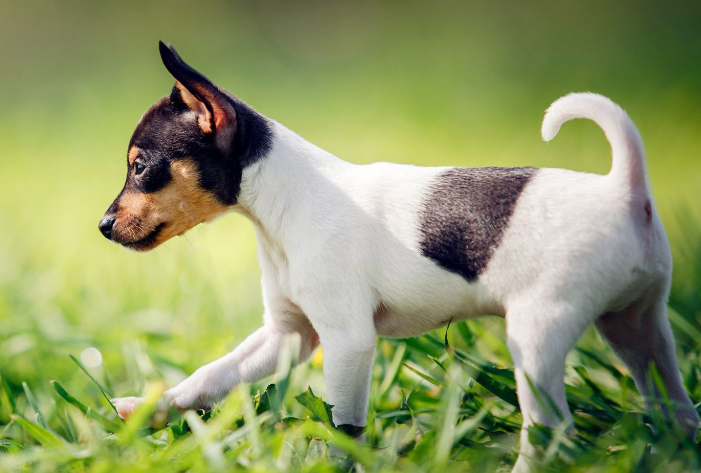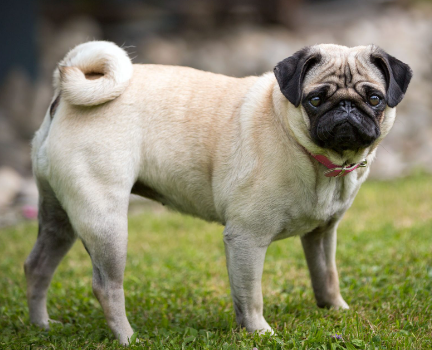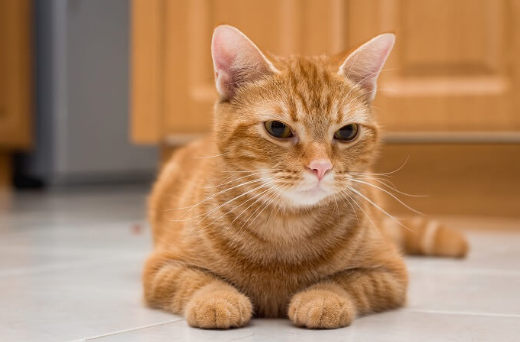The Friesian horse, hailing from Friesland in the Netherlands, is a robust and sizable equine known for its powerful physique. Despite its imposing presence, this horse exhibits agility and is gentle and amiable.
Originally named the ‘Friesian,’ this breed faced historical threats of extinction. Nonetheless, it continues to thrive in its homeland, where it remains a popular choice for both recreational and competitive riding.
Throughout its history, the Friesian has served various roles, such as a mount for knights in battle, an agricultural workhorse, and even as a performer in circuses during the 20th century. In contemporary times, these horses are predominantly utilized for leisure purposes. Their appealing aesthetics and calm temperament have also made them sought-after stars in the realms of film and television.
Classified as a warm-blooded horse breed, the Friesian exhibits two distinct conformation types: the Baroque Friesian, characterized by a robust build, and the Friesian sport horse, which features a slender and fine-boned appearance.
Weight: 544 – 635 kg
Height: 15 hands – 17 hands
Life Expectancy: 16 years
Best For Leisure riding, competition, cart pulling
Origin: The Netherlands
Friesian Horse Breed Characteristics
The Friesian breed is commonly recognized by its black coat color, although the color is not the sole distinguishing feature; occasional chestnut individuals exist due to certain bloodlines carrying the “red” (e) gene.
In the 1930s, chestnuts and bays were observed among Friesians, who typically lack extensive white markings, with a small star on the forehead being the main exception for registry purposes. To be accepted into the FPS studbook (Friesch Paarden Stamboek) as breeding stock, a stallion must undergo a rigorous approval process.
Friesians typically stand at an average height of 15.3 hands, ranging from 14.2 to 17 hands at the withers. Mares or geldings must be under 15.2 hands to qualify for the “star-rank” pedigree.
Judged by Dutch inspectors, Friesians are evaluated for star status based on their overall build, bone structure, and adherence to the breed’s distinctive characteristics, often described as a “baroque” body type.
They feature long, arched necks, short-eared “Spanish-type” heads, and muscular bodies with powerful shoulders, compact hindquarters, and low-set tails. Their limbs are short and robust, complemented by a long, thick mane and tail, often with wavy textures. The “feathers” on their lower legs, consisting of long, silky hair, are intentionally left untrimmed.
Known for their fast, high-stepping trot, Friesians exhibit a combination of willingness, activity, energy, and a docile nature. They carry themselves with elegance, making a striking presence.
There are two distinct conformation types today: the “baroque” type, reminiscent of the classical Friesian with a more robust structure, and the modern “sport horse” type, characterized by a finer build. Although both types exist, the modern type is currently more popular in the show ring.
Chestnut color is generally not accepted for stallion registration, though it may be allowed for mares and geldings. Competing chestnut Friesians are penalized, while black coats are not punished for discoloration due to injuries or sun fading.
The chestnut allele, a recessive genetic trait, was introduced in the 1990s. Efforts to breed chestnut color were initiated in 1990 by Frisch Parden Stambok and today, stallions with the chestnut gene, even if phenotypically black, are not registered with the FPS.
The American Friesian Association, separate from KFPS, permits the registration of horses with white markings and/or chestnut color, provided purebred parentage can be proven. As of 2014, eight stallion lines were known to carry the chestnut gene.
Friesians may be prone to certain genetic disorders, including dwarfism, hydrocephalus, aortic rupture propensity, and megaesophagus. Genetic tests are available for some conditions. About 0.25% of Friesians suffer from dwarfism, resulting in horses with abnormal proportions.
Additionally, the breed has an elevated rate of digestive tract disorders, hypersensitivity to insect bites, verrucous pastern dermatopathy, and a tendency for immune system compromise. Friesian mares have a high 54% rate of retained placenta after foaling, and some normal-sized Friesians exhibit tendon and ligament laxity, which may or may not be associated with dwarfism. The breed’s relatively small gene pool is believed to contribute to these disorders.

Friesian Horse History || Friesian Horse Origin
Established in 1879, the Friesian Studbook, officially known as Koninklijke Vereeniging Het Frisch Parden-Stamboek (KFPS), holds the distinction of being the oldest studbook in the Netherlands. It plays a crucial role in fostering global interest in the ancient Friesian horse breed and implements a comprehensive breeding program dedicated to preserving and enhancing its distinct characteristics.
The KFPS is guided by the tagline: “The Friesian horse. There she is: fiery, strong, intelligent, and a little superior-looking. As if he knows about his centuries-old heritage. As if she knows she has a place in many hearts.”
Friesian horses, with a presence on every continent and in over 70 countries, boast a registration count exceeding 70,000. Stringent rules and regulations govern aspects such as registration, stallion selection, and the inspection of young stock. Specific guidelines dictate the naming of foals, with a requirement for names beginning with T, U, or V in the year 2022.
The KFPS has played a pivotal role in establishing the modern form of the breed. However, historical records indicate the Friesian’s significance for centuries. Dating back to 150 AD, documents highlight the breed’s use as war horses in conflicts, including their involvement in the Crusades, potentially crossing with Arabs and Andalusians. Some historians even suggest that William the Conqueror rode a Friesian—an ancient war horse known for strength and agility.
The term “Friesian” was first documented in the 16th century in Germany, and by the 17th century, Friesians were prominently featured in Haute-école equitation. In the 19th century, the breed found prominence in the Netherlands, serving as a prestigious carriage horse for affluent landowners, leading to the establishment of the KFPS studbook. However, the breed faced near-extinction, with only three breeding stallions remaining, unable to compete with the heavy draft breeds employed in agriculture.
A decisive breeding program, initiated to rescue the breed, faced challenges but ultimately allowed Friesians not only to survive but to thrive. The well-regulated studbook contributes to the premium value of purebred Friesian horses. However, factors such as individual characteristics, pedigree, age, temperament, training, background, and abilities influence the pricing. Friesians are generally more expensive in the United States, where their numbers remain comparatively limited.
Appearance
Friesian horses exhibit a straightforward approach to color and variety. Predominantly, these horses are observed in the most common hue, black, which can vary from off-black to deep brown and true black during spring molting. The standard dictates that they should lack any white markings except for a small star on their forehead.
Occasionally, a Friesian horse may deviate from the norm and display a chestnut color, a deviation not commonly recognized by established norms.
These horses boast thick, fairy-like manes and tails, often characterized by their length, flow, and gentle waves. The presence of “feathers” on their lower legs, while not as substantial as those seen on draft horses like Clydesdales, is a distinctive feature. The natural feathers are typically left uncut due to their lightness.
Characterized by a compact and muscular build, Friesian horses are known for their elegant posture. Their elongated heads, adorned with alert ears and deep nasal cavities, contribute to their distinctive appearance. This pure elegance is further accentuated by their robust legs and bright eyes.
Temperament
Friesian horses showcase intelligence, particularly when working with individuals experienced in handling horses. Despite their intelligence, they are inherently docile and exhibit a keen awareness of their substantial size and weight.
Renowned for their versatility, Friesian horses can be proficiently trained in various skills. This adaptability, coupled with their willingness and eagerness to please, renders them easily manageable for those with prior experience.
In essence, this breed is recognized for its cheerful, loyal, elegant, strong, dignified, and calm demeanor. Friesians are notably people-oriented, enhancing their ease of interaction and collaboration.
Personality
Regarded as a warm-blooded breed, the Friesian exhibits a willingness to learn, intelligence, energy, and a calm disposition. These horses are not easily startled, and their eagerness to please makes them well-suited for competitions like dressage, being both easily trainable and suitable for riders of various skill levels.
Friesian Horse Breeds Health
Friesian horses, known for their jet-black coats, flowing manes, and impressive gaits, have captured the admiration of riders and drivers seeking a striking and attention-grabbing equine companion.
Originating from the Netherlands and inheriting qualities from primitive wild horses and potentially some Andalusian blood, Friesians are esteemed for their strength, grace, and athleticism. The breed’s establishment in 1879 aimed to preserve these traits, resulting in closely bred horses that, while producing exceptional individuals, have also brought genetic vulnerabilities to light.
Veterinarians from the College of Veterinary Medicine at Utrecht University (Netherlands) and Ghent University (Belgium) have documented disproportionate occurrences of various issues in Friesian horses, affecting their skeletal, circulatory, and digestive systems, as well as the immune system and skin. Collagen, a protein-based connective element in skeletal and soft tissues, is implicated in many of these defects.
Dwarfism is one such concern, leading to stunted leg growth in Friesian foals, with heads and bodies approaching normal size. These individuals exhibit fetlocks and hyperflexion of long, narrow hooves. Previously, dwarf Friesian mares were used as broodmares, but this is no longer allowed for registration. Nonetheless, the genes for dwarfism have proliferated.
Studies indicate excessive laxity of tendons and ligaments in dwarf Friesians compared to other pony breeds, suggesting a connection between the breed’s high-stepping gait and increased laxity. This potential collagen-linked disorder might contribute to their graceful gait.
Hydrocephalus, occurring in about 2.5 foals per 1,000 births, is an abnormal accumulation of cerebrospinal fluid inside the skull, often resulting in fatality. Collagen abnormalities linked to jugular foramen malformation may contribute to this condition.
Megaesophagus, a chronic dilatation of the esophagus, is associated with collagen abnormalities in Friesians, causing poor muscle tone and reduced contractility in the esophageal wall. Affected horses show signs such as loss of appetite, drooling, muscle wasting, mild colic, and esophageal obstruction, leading to aspiration and pneumonia.
A weakened immune system in Friesians contributes to a higher incidence of issues uncommon in other breeds. Retained placentas are reported in over half of Friesian broodmares, while insect bite hypersensitivity is twice as common as in Shetland ponies. Chronic dermatitis, causing thickened and ulcerated skin on the pastern, is prevalent, with a suspected genetic cause.
Aortic rupture, a condition usually occurring at the aortic root in most breeds, uniquely takes place at the aortic arch in Friesians. This breed-specific factor leads to symptoms like increased heart rates, poor performance, intermittent lameness, and swelling. Aortic rupture, often fatal, should be considered in young and healthy Friesians, necessitating their removal from the breeding population to mitigate the impact on affected animals.

Care
Proper care is essential for all horses, and the Friesian is no exception. Ensuring they receive a balanced diet, sufficient exercise, and regular veterinary attention is crucial.
Additionally, Friesian horses should be turned out of their stalls in the morning and evening, with consistent mucking—removal of manure and urine—from their living quarters. Daily hoof checks are necessary to identify and remove any rocks or debris. Despite their size and resilience, these horses, like anyone, dislike discomfort such as pebbles in their hooves.
For those seeking to provide extra care for their Friesian, incorporating CBD (cannabidiol) into their routine is an option. CBD, a natural hemp extract, supports balance and well-being in horses, addressing various aspects of their condition.
Cannabidiol’s sedative effect can assist in training and calming fearful or overstimulated horses. Some owners find it beneficial for relaxing their horse’s muscles and joints. CBD pills designed for horses offer a comprehensive range of nutritional benefits alongside CBD. Alternatively, CBD oil for horses is easy to administer—just a few drops into the horse’s mouth as needed.
Food
Friesian horses typically have low maintenance needs, meaning they thrive on a modest diet that includes high-quality hay, grains, vegetables, and fruits commonly found in standard equine nutrition.
Feeding
As a rule of thumb, horses typically require 1.5-2.5% of their body weight in forage daily, which includes long-stem grasses, pasture grasses, and legumes. Consulting with an equine veterinarian is essential to tailor your horse’s nutritional intake based on its specific needs, factoring in activity levels.
Due to centuries of selective breeding, Friesians boast large frames and sturdy bones. Monitoring their weight is crucial, as generic feeding guidelines may not align with the individual considerations of your horse, including bone structure, energy levels, and daily workload. Collaboration with a veterinarian is advised, and sending samples of pasture hay for lab testing can offer insights into whether dietary adjustments are necessary.
While forage forms the foundation of a Friesian’s diet, it may not fulfill all nutritional requirements. In cases where essential nutrients are lacking, grain or nutritional supplements may be recommended to address specific deficiencies, such as a shortage of fiber or carbohydrates.
Various grains, such as oats, barley, corn, wheat, and millet, can be utilized based on the expert advice tailored to your horse’s needs. Adequate water intake is crucial, with horses typically requiring 5-10 gallons per day.
Friesians, like other horses, require essential trace minerals such as zinc, copper, manganese, and cobalt to support growth, coat health, and immunity. A convenient way to provide these minerals is through a salt block, ensuring your horse receives the necessary nutrients for overall well-being.
Grooming
The remarkable hair of Friesian horses stands out as one of their most distinctive features, but it also poses a significant grooming challenge compared to other breeds. The thick mane, tail, and feathers on the lower legs demand more attention and care.
After a training session, it’s advisable to hose off your horse’s sweat to minimize the presence of flies. A thorough bath, ideally conducted at least once a month, contributes to the overall well-being of the horse. When choosing shampoo, opt for a low-suds variety to facilitate the handling of the substantial hair volume. Brushing a Friesian’s feathers, tail, and mane requires a bit more effort and time compared to grooming other equine breeds.
Grooming these thick-haired beauties involves brushing their feathers, tail, and mane similar to how you would attend to your own hair. The use of shampoo and conditioner proves beneficial in maintaining their luxurious coats.
After a brief hose-down, use a towel to dry your Friesian. For a more comprehensive bath, employing a blow dryer becomes essential. This breed’s dense coat can trap moisture, potentially leading to foot damage or bacterial growth, making blow-drying a crucial step in their grooming routine.
Training And Exercise
Friesian horses display positive responsiveness to training, particularly in the context of dressage. The term “dressage” is derived from the French word for “training,” representing a competition where judges assess a horse’s proficiency in executing specific movements.
In dressage competitions, Friesian horses, with their distinctive high-footed gait, excel in performing “passage” movements as they traverse the arena under the guidance of the rider. Even if you do not intend to enter your Friesian in formal competitions, regular exercise remains essential. Providing opportunities for your horse to roam outside daily, bask in sunlight, and indulge in grass rolling contributes to their well-being. For a more controlled form of exercise, consider riding in a ring or exploring trails.
Adoption Center
See More Horse Breeds For Further Research
FAQs
Friesian Horses Price in India
The cost of an old mixed-breed horse in India typically ranges from 10,000 to 80,000 rupees. However, opting for a premium indigenous breed like Marwari, Kathiawari, Zanskari, Manipuri, or Spiti can elevate the price to the range of 3-5 lakhs, depending on the horse’s bloodline. A purebred horse with a superior bloodline may command prices of 6-8 lakhs.
For exotic breeds bred abroad, the price tag can be in the range of 10-12 lakhs, and if imported, it may escalate to around 15-20 lakhs. Prices are influenced by factors such as the horse’s lineage, and those descended from champion racehorses are generally more expensive.
What Sets Friesian Horses Apart?
Friesian horses are recognized for their fast, high-stepping trot. They are known to possess a combination of willingness, activity, and energy, coupled with a docile nature. Friesians exhibit a notable presence and carry themselves with elegance.
How Rare are Friesian Horses?
While Friesian horses are esteemed for their popularity in dressage and carriage activities, they remain relatively rare. Estimates suggest that there are fewer than 1,000 registered Friesian horses in North America.
Are Friesian Horses Good Horses?
Considered a warm-blooded breed, Friesians are characterized by their willingness to learn, intelligence, energy, and calm demeanor. Their lack of easily triggered fear and eagerness to please make them well-suited for various competitions, such as dressage. Friesians are known for being easy to train and adaptable to a range of riders.
Why Did Friesians Almost Go Extinct?
The near-extinction of Friesian horses in the 1900s resulted from a diminishing market for multi-purpose horses. By the mid-1900s, the Friesian population had dwindled to about 500. To revive and promote the breed, a riding association called De Orsprong (The Source) was established.












3 thoughts on “Friesian Horse Breeds: Care And Mor One Of The Best Information For You…”